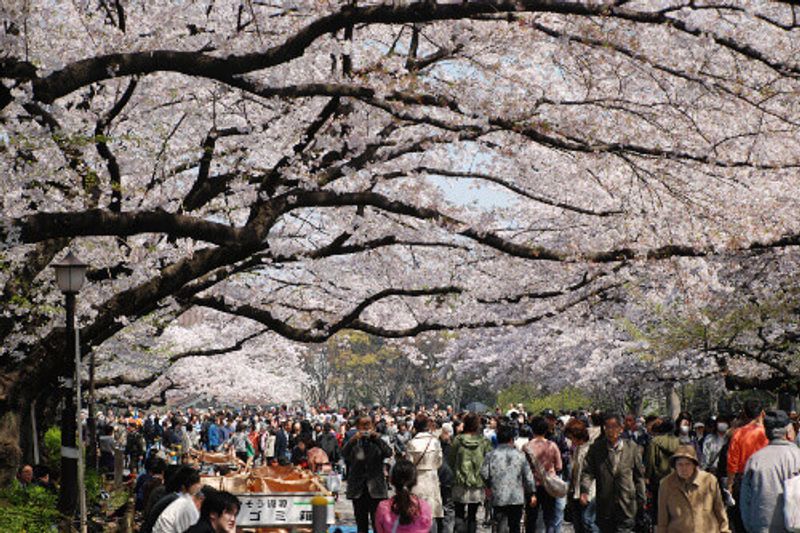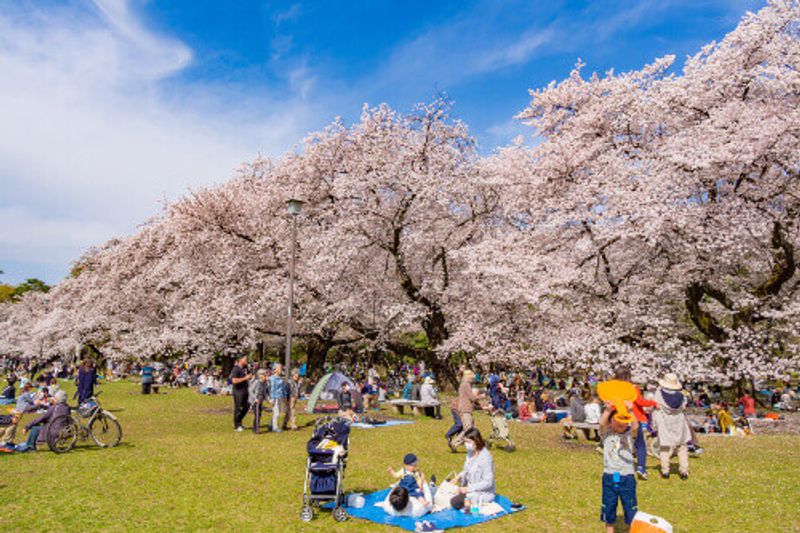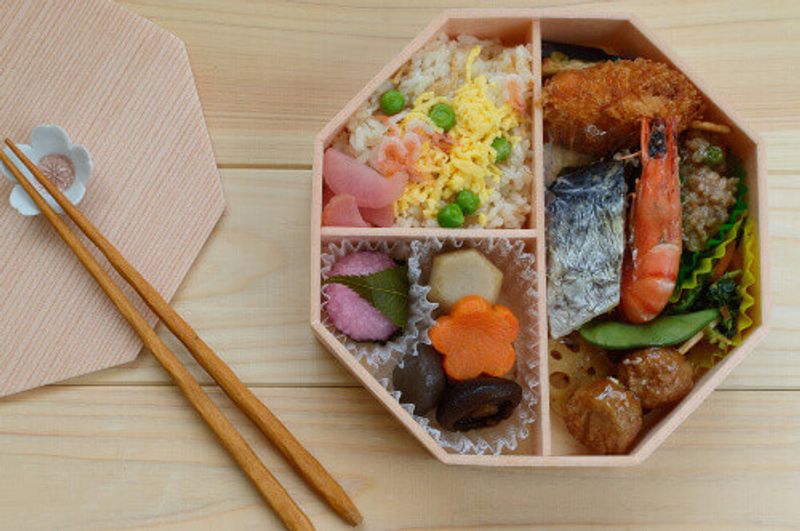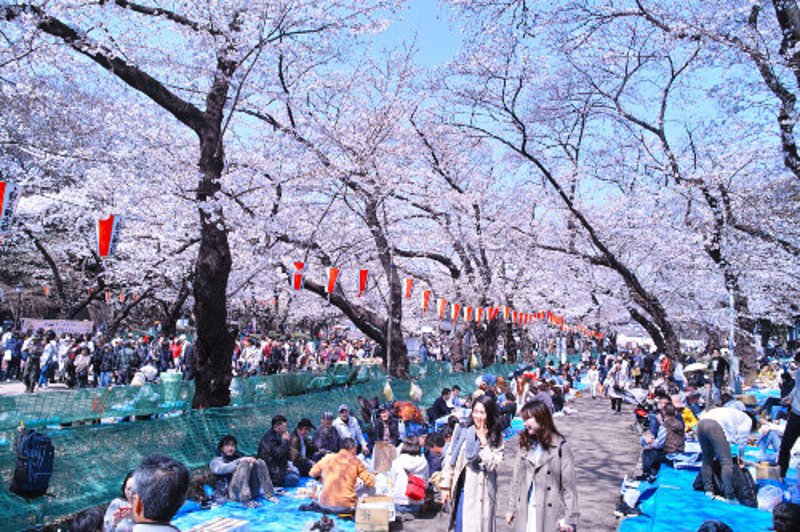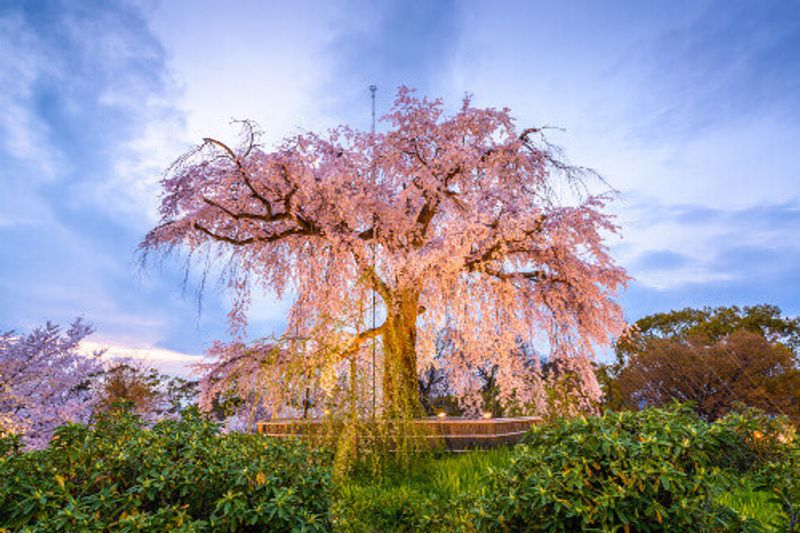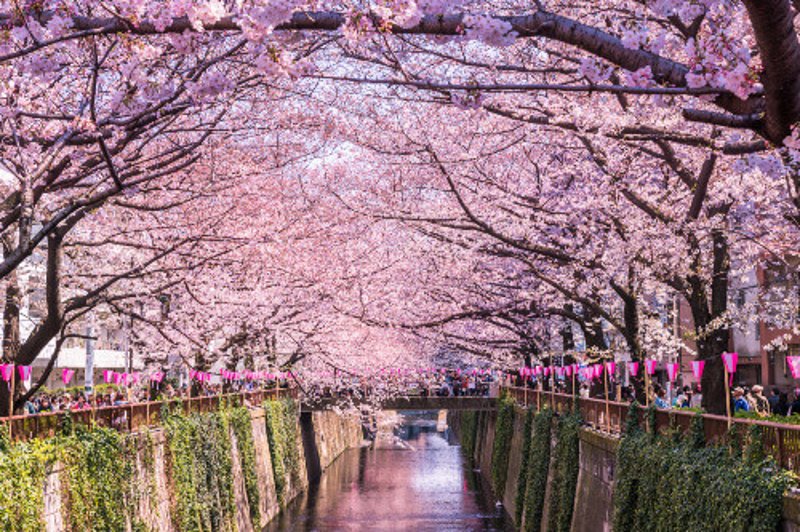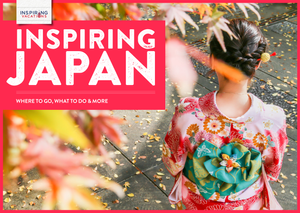The act of viewing flowers in bloom is a sacred Japanese past time that dates back centuries
What is hanami?
The term hanami is a combination of two words: hana meaning flowers and mi meaning viewing. While it sounds like a vague expression, the term has become synonymous with the annual flowering of cherry blossom trees across Japan. Every year as the blossoms start to bloom, locals and visitors alike descend on the country’s most beautiful parks and shrines to bask in the transient beauty of the sakura (cherry blossom).
History of hanami
The act of hanami is a centuries-old practice with roots in farming and ancient aristocracy. Long before it was popular among the elite, Japanese farmers used the blooming of sakura as a sign that it was time to sow their rice crops. It’s believed that they held elaborate feasts under their boughs as an offering to the gods and to pray for a good harvest.
While the sakura held the attention of the lower class in ancient Japan, Japanese nobles were far more interested in the ume or plum blossom, brought to the country from China. Posh parties were held by members of high society to celebrate the ume bloom at the beginning of spring.
EXPLORE OUR INSPIRING JAPAN SMALL GROUP TOURS HERE
It wasn't until the Heinan period that the cherry surpassed the plum blossom in popularity and became the subject of poetry and song. Elaborate sake-fuelled banquets were held under their flowering branches, with the trees celebrated for their brief, yet marvellous beauty. In the coming centuries, the act of hanami extended to the warrior class and eventually, to the common folk where it took on a new, spiritual meaning. Today, many visitors plan their holiday to Japan to coincide with the sakura season.
Ancient versus modern hanami
Visit Yoshino east of Osaka, or Yoyogi Park in Tokyo, and you’ll see thousands of people under sakura trees, participating in hanami parties. Hundreds of years ago however, it’s fair to assume hanami would have been a different affair. At the first sign of the blooms, the upper echelons of Japanese society would gather in private gardens to write and read poetry, sing and dance.
By the Edo period, hanami had spread to samurais, but was still a tradition reserved for the ruling class. That is until the Tokugawa Shogunate ordered cherry blossoms be planted in public places for everyone to enjoy, sharing the tradition with the masses.
Modern hanami-goers typically bring a rug, portable chair, snacks and drinks, before settling into an empty spot under a sakura tree. At this time of year, many stores sell hanami bento boxes, containing seasonal ingredients such as takenoko (bamboo shoots), sakura-flavoured sweets and vegetables cut into the shape of flowers; their portability makes them a great addition to a hanami picnic.
When do hanami parties take place?
At the first sign of the sakura bloom, people descend on Japan’s parks and gardens. Organised events are usually held when the cherry trees are in full bloom at the beginning of April, but those seeking a quieter flower viewing can set up whenever they please. If you’re planning on an impromptu hanami, be mindful of Japanese customs. Some areas don’t allow picnics, while others prohibit alcohol and no matter where you celebrate, take your rubbish with you. The Japanese people are very waste-conscious, so public bins are few and far between.
Best places for hanami in Japan?
Maruyama Park
The oldest park in Kyoto is also the site of the city’s largest hanami celebrations. At Maruyama Park, in the busy district of Gion, there are almost 700 cherry blossom trees including the stunning weeping sakura. Come night time, the trees are illuminated with thousands of lights and lanterns. The park’s prime location makes it easily accessible but extremely crowded, so arrive early to get a good spot.
Philosophers Path
If you prefer to wander rather than sit, take a stroll down the Tetsugaku-no-michi or Philosopher’s Path in Kyoto which runs along the Lake Biwa Canal. The 2 km path is dotted with sakura trees and shrines and leads to the stunning Ginkaku-ji Temple (Silver Pavilion).
Meguro River
Eight hundred cherry trees line the banks of the Meguro River in Tokyo and curve overhead into a natural tunnel, making for a spectacular sight during sakura season. Along the 4 km stretch, locals and visitors alike picnic under the blossoming trees and frequent the nearby cafes. Night time is the main event here, as trees are lit up with lanterns and food vendors offer local treats. For the best experience, visit towards the end of the season as the trees shed their petals into the river, turning the water pastel pink.
Ueno Park
Tokyo's Ueno Park is credited as one of the earliest hanami spots in Tokyo and is definitely one of the most beautiful, if you don’t mind braving the crowds. Before it was a designated public park, Ueno was home to the Kan’ei-ji Temple, where cherry trees were planted as early as the 17th century. Now, there are over 1,000 of them lining the park’s many zigzagging paths. The site is centrally located, with numerous museums nearby and copious open space, making it the perfect place for Tokyo’s largest hanami matsuri (festival).
